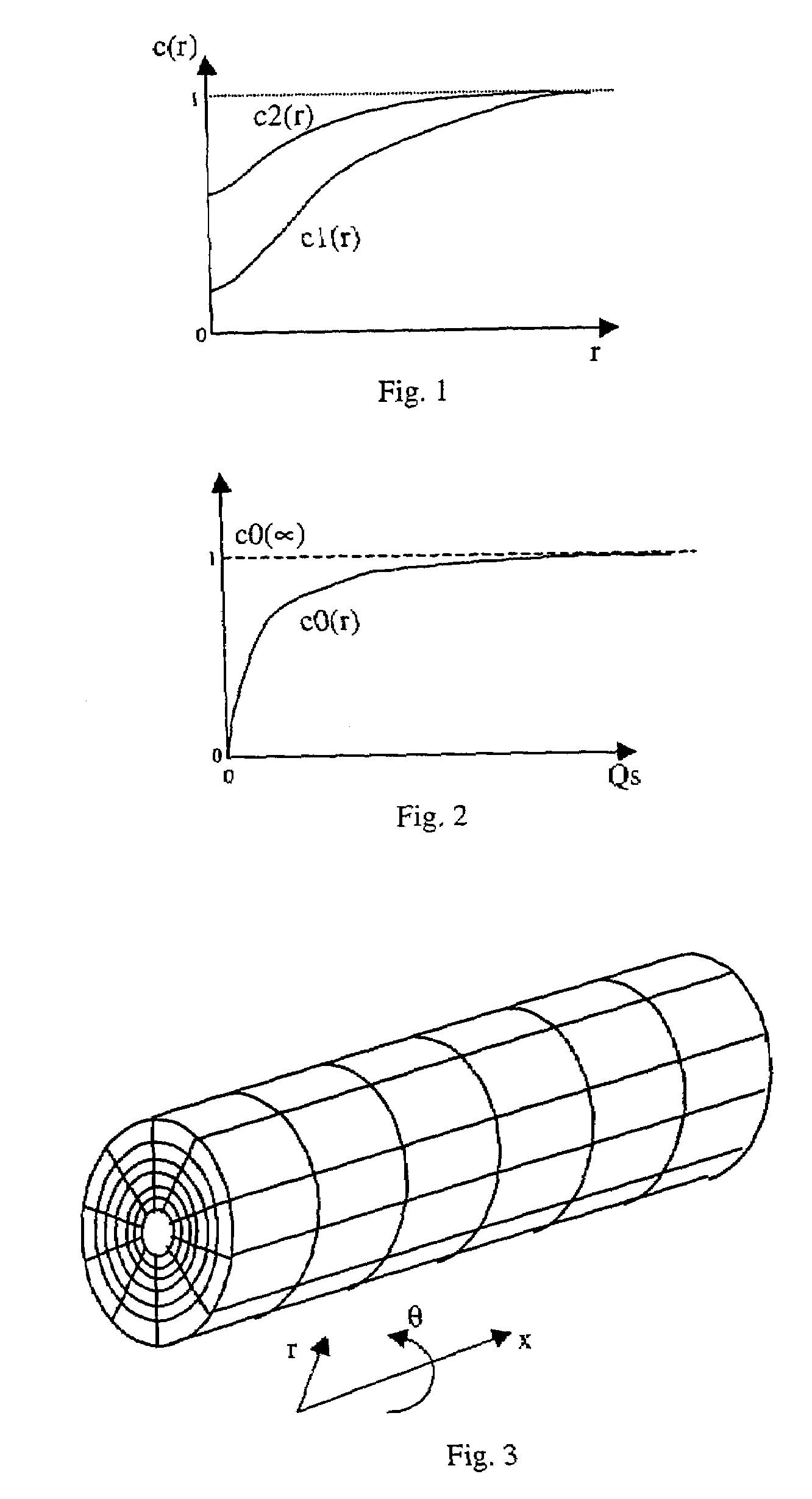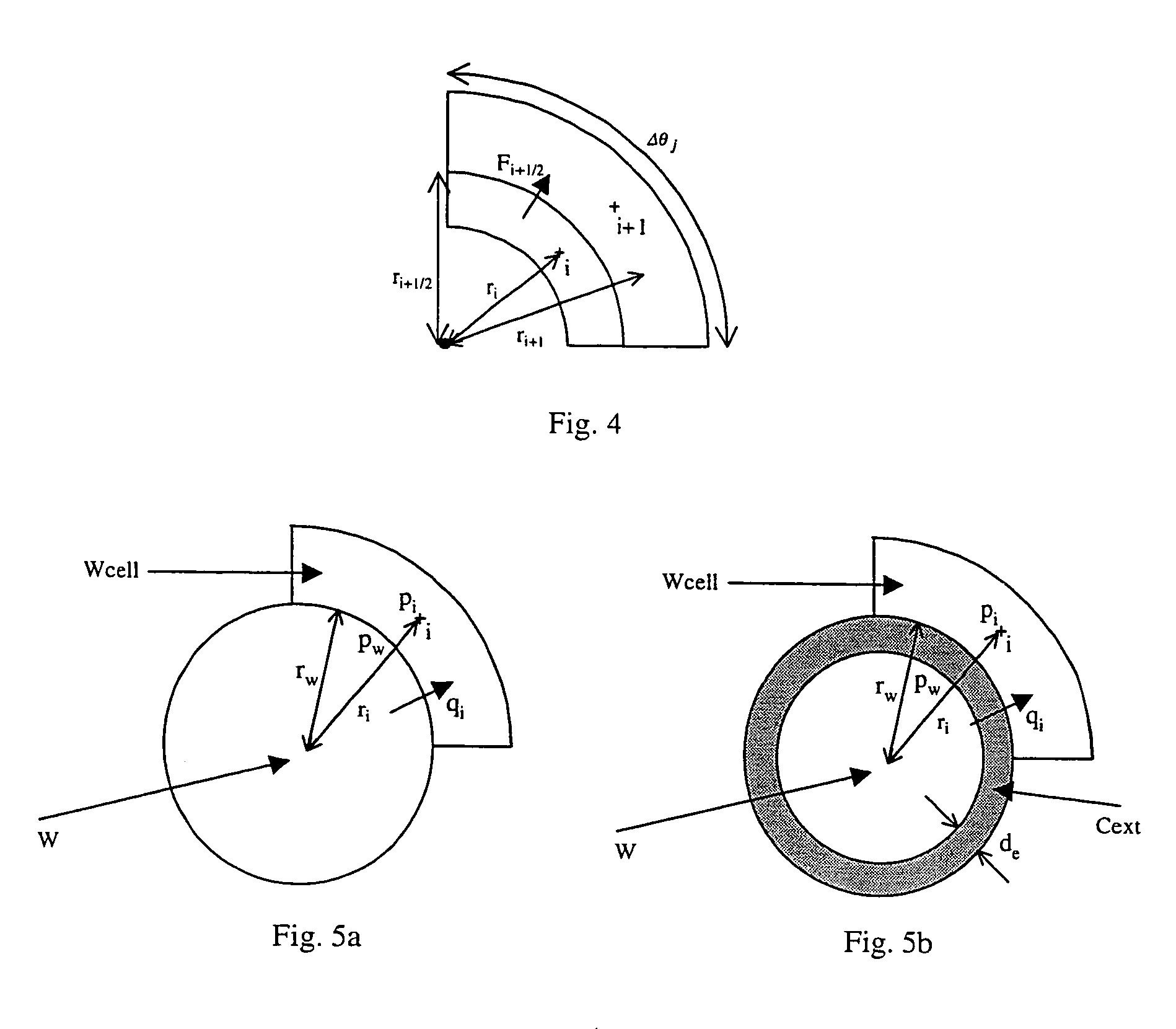Method of determining by numerical simulation the restoration conditions, by the fluids of a reservoir, of a complex well damaged by drilling operations
a technology of fluids and reservoirs, applied in the field of numerical simulation of the restoration conditions, by the fluids of a reservoir, of a complex well damaged by drilling operations, can solve the problems that laboratory surveys are often insufficient by themselves to realistically model the production
- Summary
- Abstract
- Description
- Claims
- Application Information
AI Technical Summary
Benefits of technology
Problems solved by technology
Method used
Image
Examples
example 1
Clearing in the Presence of the Internal Cake Alone
[0069]A 20-m long part of a horizontal well running through 4 zones is considered which “alternately representative of two different heterogeneity types (FIG. 6). The permeabilities k of the corresponding media, initially without damage, are 1000 and 100 mD. The length of each medium crossed is 5 m. The values of the permeability in the grid cells where the internal cake due to the damage has formed are entered manually into the data set. The curves, by zones, of the multiplying coefficient of the damage permeability as a function of the distance to the wall of the well c1(r) are given in FIG. 7. The restored permeability curves c2(r) are shown in FIG. 8. These curves are discontinuous because the data supplied by the laboratory measurements only concern some points. The larger the number of points, the better the laboratory curve is represented. The permeability variation during cleaning as a function of the amount of fluid flowing...
example 2
Presence of a Non-Uniform External Cake Along the Horizontal Well
[0080]The same well geometry is considered as in the previous example. In this example, the reservoir is homogeneous with a 1000-mD permeability in the porous medium. The external cake has no homogeneous presence along the well. In some places, there is no external cake, and in the places where the external cake is present, it has a 1-mD permeability kext and a 4-mm thickness rext as in the previous example. The distribution of the presence of the external cake is given in FIG. 13. The pressure difference required for removing the external cake is still set at 0.5 bar.
[0081]Two types of boundary conditions are used in the simulations. For the first case, a 318.2-bar pressure is applied at the well bottom, i.e. a 1.8-bar pressure difference between the reservoir and the well. For the second case, several consecutive pressure stages are applied to reach a total 1.8-bar pressure drop (Table 2).
[0082]FIGS. 14 and 15 show t...
PUM
 Login to View More
Login to View More Abstract
Description
Claims
Application Information
 Login to View More
Login to View More - R&D
- Intellectual Property
- Life Sciences
- Materials
- Tech Scout
- Unparalleled Data Quality
- Higher Quality Content
- 60% Fewer Hallucinations
Browse by: Latest US Patents, China's latest patents, Technical Efficacy Thesaurus, Application Domain, Technology Topic, Popular Technical Reports.
© 2025 PatSnap. All rights reserved.Legal|Privacy policy|Modern Slavery Act Transparency Statement|Sitemap|About US| Contact US: help@patsnap.com



